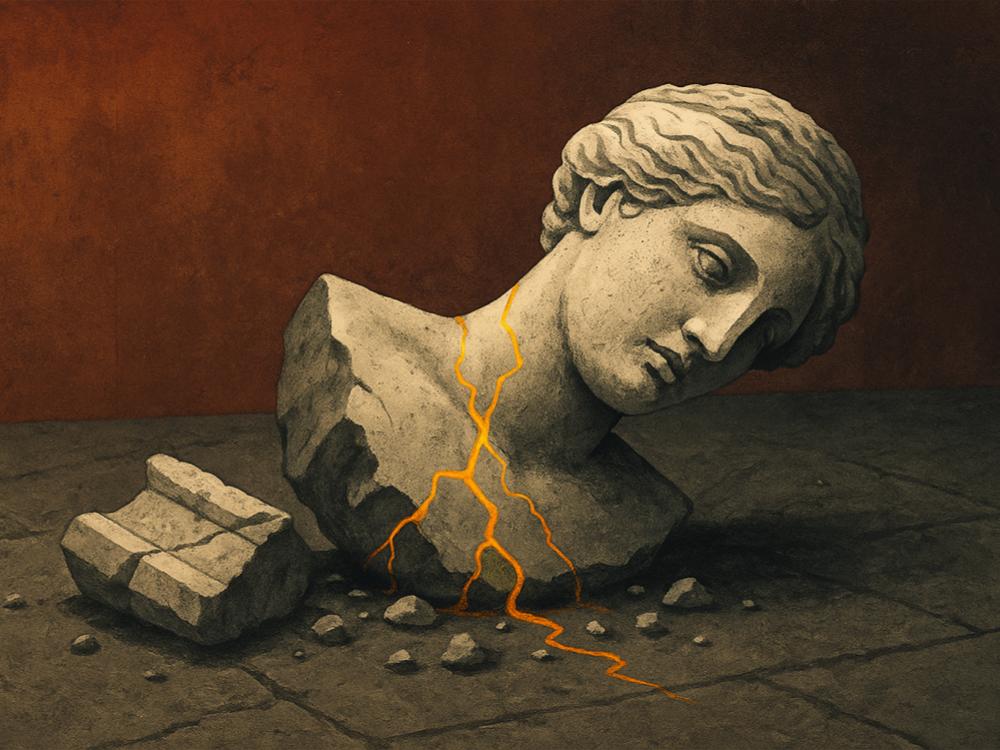Entropy is Actually What's Keeping the Universe in Order.

A Different Kind of Order
We learn early to treat entropy as a synonym for ruin, a creeping loss that frays the edges of everything we value until structures sag and patterns dissolve. The second law of thermodynamics arrives like a sentence pronounced from on high: in any closed system, disorder grows, energy diffuses, and useful differences flatten into sameness. It is natural to hear this as a promise that order is temporary and chaos is forever. Yet the world that law governs is not a heap of rubble. It is a working world in which stars burn with astonishing regularity, planets cool into stable crusts, cells maintain their membranes, and cities wake each morning with water in the pipes and power in the lines. The puzzle is not why things fall apart. The puzzle is how so much holds together long enough to matter.
The answer begins with a small correction. Entropy does not merely erase structure. It measures the number of ways a system can be arranged without changing what counts at the scale we care about. When energy flows through a system, the system can maintain its shape by exporting disorder it does not want to keep. A refrigerator chills its interior by dumping heat into the room. A living cell keeps its chemistry far from equilibrium by burning fuel and shedding entropy into its surroundings. The river runs downhill, but the mill on its bank turns grain into bread. None of this evades the second law. It uses it as a power source.
The Logic of "Disorder"
Consider how patterns arise when energy gradients exist. Hot meets cold. High meets low. The boundary between them becomes a workshop where order can form transiently and persist for meaningful spans of time. Convection cells stack into hexagons in a heated fluid because that is the most efficient way to move heat outward. Snowflakes grow intricate arms because a falling crystal must shed water vapor along paths that minimize resistance. Even the orbits of planets trace predictable ellipses because dissipating gravitational energy organizes their motion into regularity rather than chaos. In each case the pattern is not an exception to entropy but an instrument of it, a channel that accelerates the very dispersal the second law describes.
At human scales the same logic governs the hum of a server farm or a subway network at rush hour. A data center is a device for moving information, but it is also a device for moving heat from processors to coolant loops to the evening air. The subway takes an unruly cloud of individual paths and shapes them into pulses that a city can absorb. We read these arrangements as order because they are stable enough to build around, and they are stable because they sit on top of steady flows of energy and waste. Order that refuses to touch entropy dies. Order that couples itself to a gradient can last.
It helps to retire the image of entropy as a vandal prowling the edges of our projects and replace it with the image of a taxman who funds the road you drive to work. Energy gradients create possibilities. Entropy collects the fee that keeps the traffic moving. The world pays, and the payment buys durability.
Life, Memory, and the Work of Dissipation
Nowhere is the contract clearer than in living systems. A cell is a membrane-bound conspiracy against equilibrium. It holds a difference in ion concentration across a thin wall and uses that difference to power pumps, assemble proteins, and copy information. Every step spends free energy and leaves the environment a little warmer, a little more mixed, a little higher in entropy. The organism persists by building a local island of low entropy that is constantly washed by a rising sea of waste heat. Your brain, which you sometimes imagine as a pure engine of ideas, is in practice a heat source that stabilizes its own patterns by burning glucose and oxygen at a rate that a small city block would admire.
This economy of order and dissipation extends into the informational structures we live inside. A library is not a static monument to knowledge; it is a temperature-controlled, catalogued, cleaned, and continually reorganized machine for fighting dust, humidity, misplacement, and apathy. A scientific discipline looks like a cathedral from a distance, but up close it is a web of seminars, referees, servers, flights, and failing prototypes that together export the entropy generated by continual revision. The authority of a chart or a law rests on a material base: power to run instruments, staff to maintain them, and rituals that move error outward so that a result can endure.
Two thirds of the way through a long experiment, when the lab is loud and the coolant lines chatter, an older engineer once leaned on a bench and said something I have carried ever since.
Entropy is not the enemy of order; it is the rent order pays for space and time.
What does this mean? It means every durable pattern is a tenant, not an owner, and the rent is the steady transformation of concentrated resources into diffuse remainder. Refuse to pay and the pattern collapses. Pay predictably and the landlord leaves you alone to build something worth inhabiting.
Instruments, Cities, and the Design of Stability
Because order is maintained by moving entropy elsewhere, the ethics of design becomes an ethics of where the elsewhere lives and who bears its cost. A power grid keeps hospitals lit through storms by shedding heat into the air and by pushing risk into substations and storage yards that look like nothing until they fail. A logistics network keeps grocery shelves filled by burning fuel, smoothing peaks and valleys in demand, and treating warehouse space as a buffer where turbulence is converted into queues. A watershed preserves clarity in a lake by letting silt drop out in a wetland upstream. In each case the system remains regular because its edges are engineered to receive the mess the center cannot keep.
This perspective does not trivialize the damage that real disorder can do. It clarifies why maintenance is moral philosophy in work clothes. If you understand that your classroom's calm depends on a staff that arrives an hour early to make it so, you will think differently about budgets and praise. If you understand that the elegance of your code rides on a pipeline of logs, backups, and alerts, you will think differently about toil and about who carries it. Entropy will be paid. The question is whether we distribute the bill with discernment.
The Order We Inherit
When we say that entropy keeps the universe in order, we are not indulging in paradox for its own sake. We are noticing that the second law sets the stage on which all reliable form appears. Stars radiate because fusion seeks lower energy configurations and throws off light as it goes. Weather systems spiral because the planet is unevenly heated and rotating, and the easiest path from imbalance to balance is a dance. Human projects prosper when they align with these downhill paths and use them to support upstream structure. Human failures multiply when we pretend we can bolt order to the air and never account for the waste it creates.
The practical counsel is simple to state and lifelong to learn. Build where energy flows already exist. Give your systems places to shed heat, noise, and error. Treat stability as a verb and make friends with the people who keep it moving. Honor the wetlands, the caches, the night shift, the janitor, the indexer, the person who knows which breaker to reset and which to leave alone. If you want your pattern to last, design its rent into the blueprint, because the landlord never forgets.
In this light the universe is not a museum in decay but a workshop in session. The hiss you hear is not a leak. It is the sound of order buying its continued permission to operate. The fee is not optional, and that is good news. It means our world is built on a law that guarantees the possibility of change, channel, and renewal. We do not defeat entropy by wishing it away. We enlist it. We learn its rates and its routes. We let it carry off what we cannot hold so that what we can hold has room to breathe.



